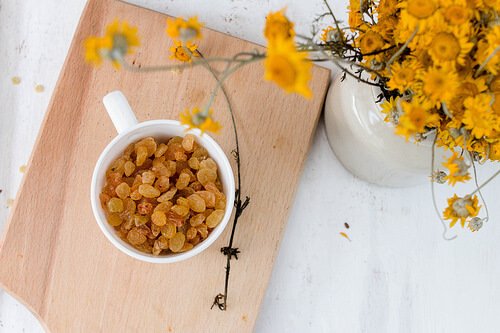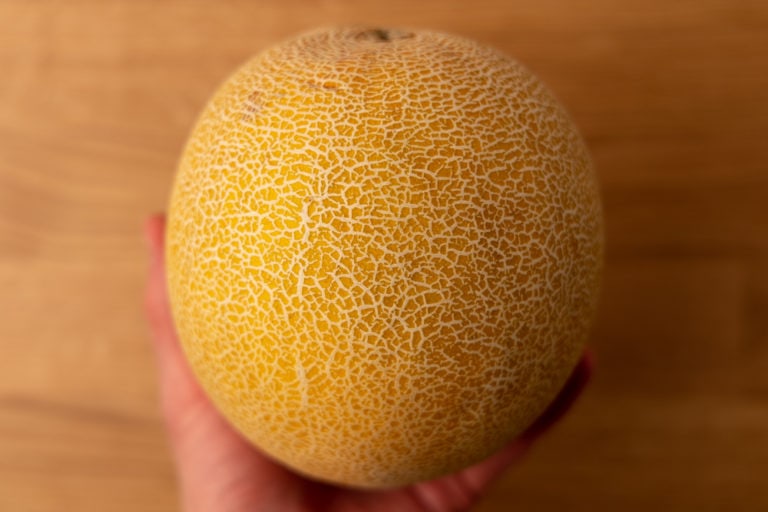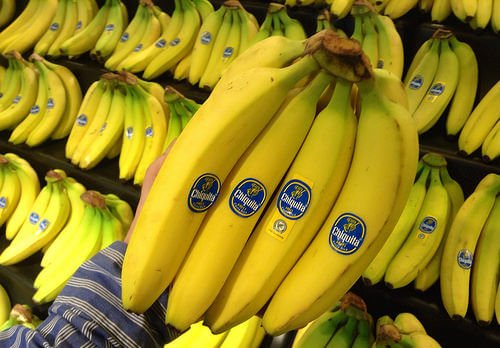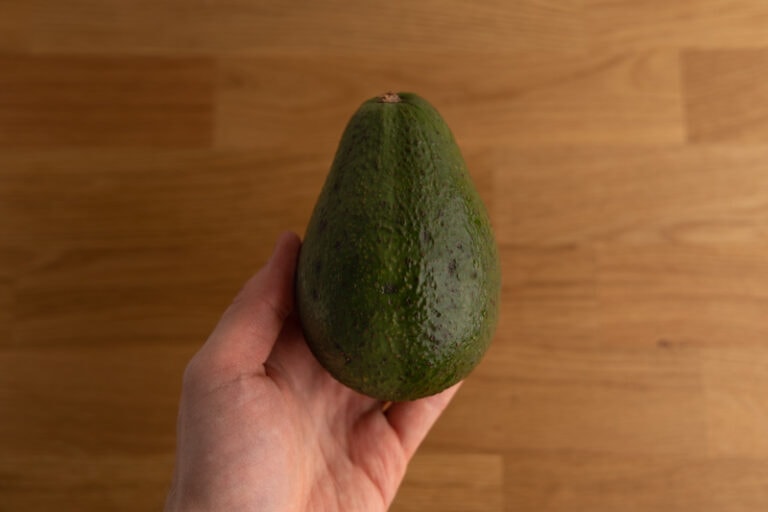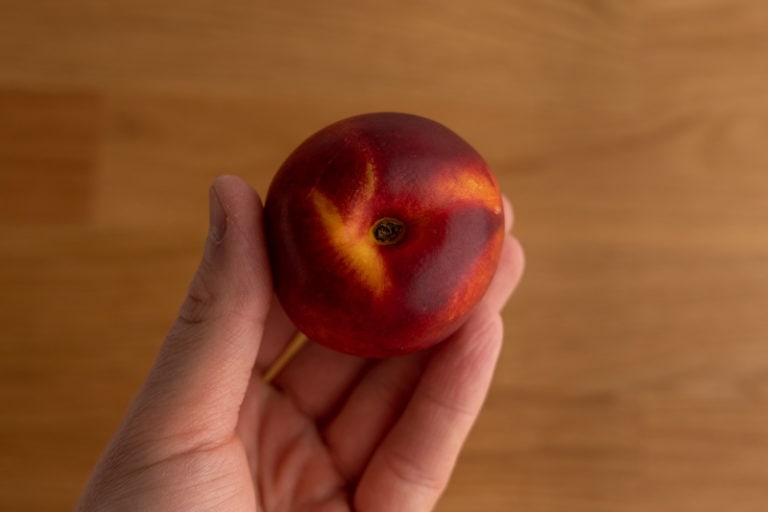How to Ripen and Store Mangoes at Home?
Here’s all you need to know about ripening and storing mangoes. Learn how to tell if a mango is ripe, how to ripen one, and how to store mangoes, both whole and cut.
First time mango buyer and you’re not sure if what you have on hand is ready for eating or not? How do you tell if a mango is ripe?
Or maybe you’re wondering whether you should put your mangoes in the fridge, or if leaving them on the counter is okay.
If you’re new to mangoes, you probably have a bunch of storage-related questions. And even if you’re not, you might need a quick refresher. And that’s what this article is all about.
Let’s start by discussing ripeness, as knowing if yours is ripe or not is essential to how you store it.
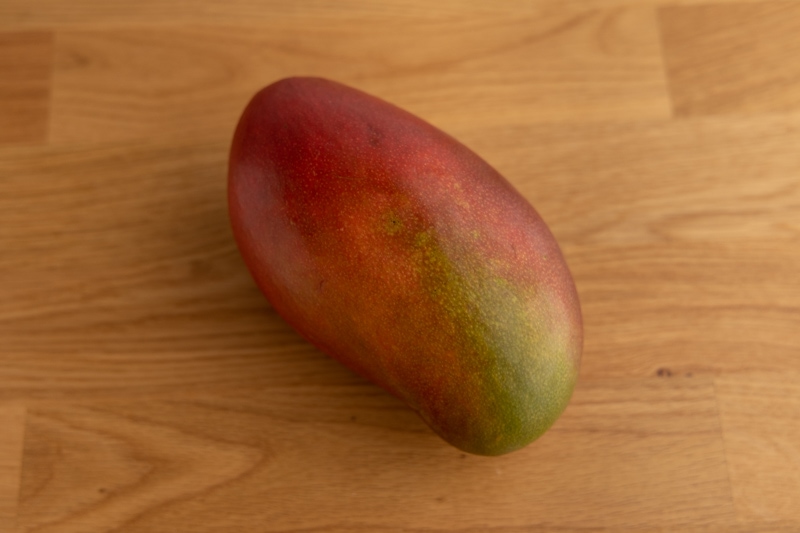
How to Tell if a Mango Is Ripe?
A mango is ripe when it gives a little when you apply gentle pressure using your fingers. If it’s firm and has no give, it’s not yet ripe, and if it’s soft and has a lot of give, it’s already overripe. Feeling the fruit is the only reliable way to tell if it’s already good to eat or not.
Now, there are three other characteristics that might help you tell if your mango is ripe, but remember that feel is the primary one that’s the most reliable.
Smell
If the stem end of your mango gives off a fruity smell, that usually means the mango is good to eat. But if yours doesn’t smell like much, it might be perfectly ripe just as well.
(None of the mangoes I ever bought had a fruity aroma, and they all were ripe and tasted sweet.)
Color
Some mango varieties change color as they ripen, similar to how bananas go from green to yellow as they mature. Unfortunately, that’s not the case for all popular varieties, and some of them don’t change color at all.
(For instance, the Keitt variety stays green even after it ripens.)
Skin shriveling
The last one is signs of skin shriveling. If you notice that the skin, usually near the stem end, starts to shrivel, that’s a sure sign the mango is ripe.
Of course, shriveling is usually a sign that a fruit or veggie is starting to deteriorate, and it’s the same for mangoes. In other words, you don’t have to (or even want to) wait until that happens.
Long story short, unless you want to memorize how each mango variety changes as it ripens, it’s best to stick to how it feels to the touch.
Now that you know which is which, it’s time to talk about ripening an unripe mango.
How to Ripen Mangoes
To ripen mangoes, let them sit at room temperature. To speed up the process, you can place them in a paper bag and fold it. You can even put an apple or banana into that bag to accelerate ripening even further.
If you don’t particularly care how long it’ll take until your unripe mangoes ripen, feel free to put them in a fruit basket or wherever else you let unrip fruits mature. Just make sure they sit in a dry place away from sunlight and are well ventilated.
The ripening process usually takes several days, and that’s when the fruit becomes sweeter and softer. So after those 2 to 4 days, you should notice that the fruit is softening slightly, and that’s how you know it’s ready to eat.
(Make sure the whole mango is slightly soft, a single tender spot doesn’t mean it’s ripe.)
Last, remember to check your ripening mangoes every day so that you catch the moment they’re ripe and separate ripe ones from ones that are not.
Ripening Mangoes Quickly
To ripen mangoes more quickly, place them in a sealed brown bag. The more mangoes inside, the sooner they’ll ripen. To accelerate the process, put an apple, a ripening banana, or another ethylene-producing fruit or veggie inside.
Ripening unripe mangoes (or other stone fruits, for that matter) is all about ethylene gas concentration. The more of it around, roughly speaking, the sooner the fruit will be ready for consumption.
So when you place the mangoes in a sealed paper bag, that bag helps trap the ethylene, keeping more of it around the fruits. Adding other ethylene producers to that bag is more of the same.
One thing to remember here is that all the fruits in that paper bag will ripen faster. So you not only have to watch the mangoes for ripeness, but also those avocadoes, apples, pears, or whatever else you put in there.
Finally, if you don’t have a paper bag on hand, don’t try to replace it with a plastic one.
Plastic bags trap ethylene alright, but unfortunately, they also trap all the moisture. And if that moisture doesn’t evaporate, it might cause the mangoes to spoil prematurely, which is the opposite of what you want.
(Paper bags allow the mangoes to breathe and the moisture to evaporate, which is why they’re perfect for the job.)
If you were wondering, the same trick works for ripening other fruits. So you might find it helpful when you’re, for instance, storing apricots that you want to ripen quickly.
Now that you know the basics of ripening, it’s time to cover storage.
How Long Does It Take for a Mango to Ripen?
Mangoes that sit on the counter need between 2 to 5 days to ripen, depending on how far off they are. If you place them in a sealed brown bag, that period should shrink to 1 to 3 days, or even slightly less if you add some extra ethylene-releasing fruits or veggies to the bag.
These are rough estimates, of course, and I don’t have a crystal ball to tell you exactly how much time your mangoes require.
Because of that, if you need that mango to be at peak ripeness on a given date because you need it for a cake or another recipe, it’s best to go to the grocery store that day and choose one that’s ripe. That’s the only sure way to get what you want.
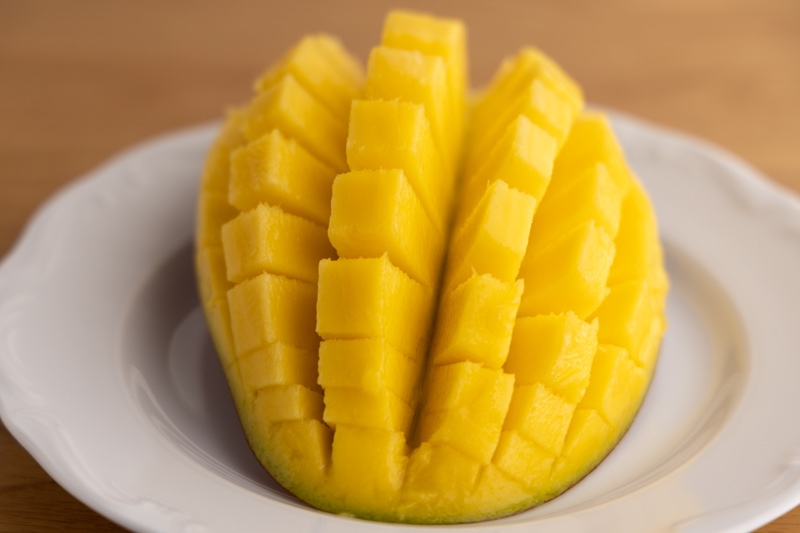
How to Store Whole Mangoes
Store your unripe mangoes on the counter at room temperature until they ripen. Once ripe, transfer them into the fridge for 5 to 7 days, or leave them at room temperature for up to 2 days.
If you decide to leave a ripe mango at room temperature, remember that it should sit in a cool and dry place away from sunlight, and have sufficient airflow. A fruit basket or a ventilated bag are both good options.
(Just make sure there aren’t any ripening fruits around, especially ones that release ethylene.)
When refrigerating a mango, the crisper drawer is probably your best bet because it’s usually both quite humid and a bit warmer than the rest of the fridge. And that’s an environment that mangoes like.
If you’re leaving a mango on a fridge shelf, consider placing it in a plastic bag. That bag will both help it retain water content (fridges tend to dry out foods) and prevent it from absorbing any odors from smelly foods.
And definitely use a bag if you want to place that mango if it’s going to sit next to sausage that’s only barely wrapped in paper.
Now, let’s talk about which storage option is better, if any.
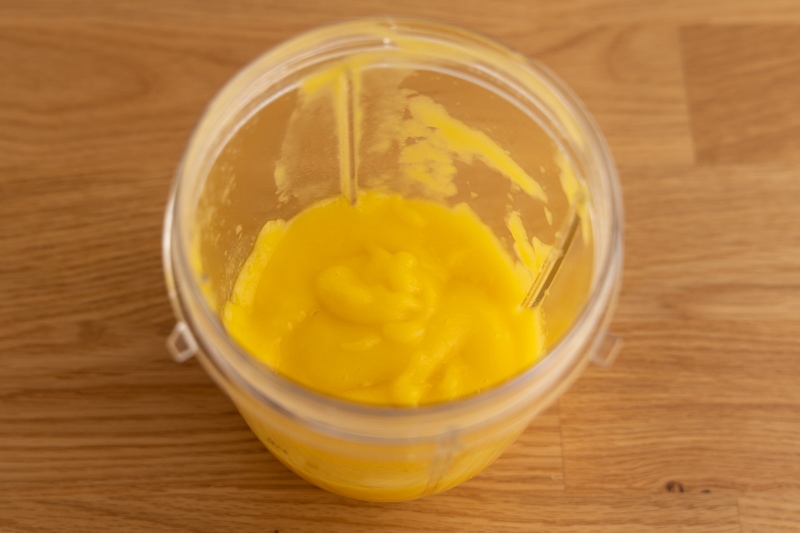
Should Mangoes Be Refrigerated?
You don’t have to refrigerate ripe mangoes, but it’s highly recommended because it significantly extends the shelf life of the fruit. A mango that sits on the counter will keep for only 1 to 2 days, while one that you refrigerate can last between 3 and 5 days.
That means that unless you’ll eat that mango within a day or so, it’s best to place it in the fridge.
Some recommend storing mangoes at room temperature because tropical fruits typically prefer higher temperatures. That’s true for mangoes, as the suggested storage temperature for a ripe one is 50°F (10°C), which is noticeably warmer than in your average fridge.
So if you have a cold pantry or cellar, store your ripe mangoes there. But if you don’t, your only choices are room temperature and refrigeration. And if you opt for the former, your mangoes will go overripe really fast.
All in all, leave the mango on the counter if you plan on eating or using it within a day or so, and refrigerate it otherwise.
How to Store a Cut Mango
Cut mangoes last 3 to 4 days in the refrigerator. It’s best to store them either in a resealable bag or an airtight container.
For large pieces, like halves, I suggest a ziploc bag, as it takes much less space than a container. For smaller cuts, diced mango, or mango puree, an airtight container is the best option.
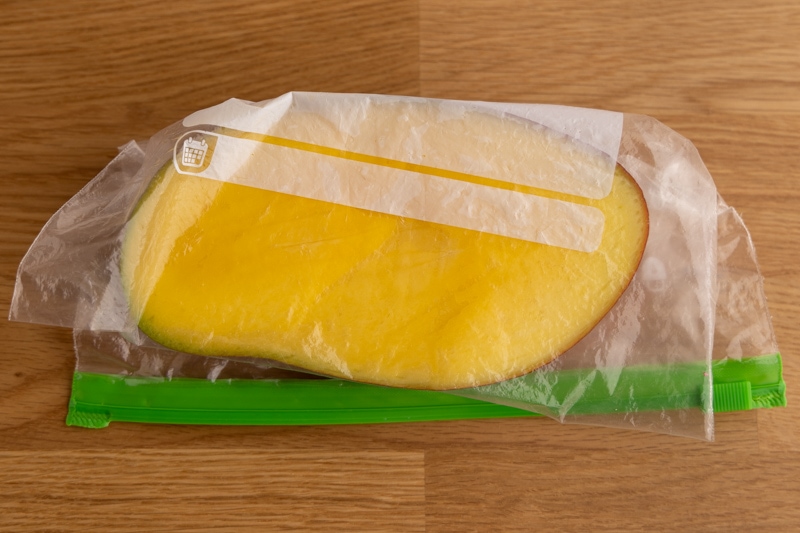
The most important thing is that the fruit is sealed tight, so that it doesn’t dry out. That means that simply wrapping the fruit with plastic wrap works fine if you don’t have a bag or container on hand.
(Don’t try that with pureed mango, though.)
Last but not least, you can freeze mango. So if you can’t use the fruit before it goes bad (more on that in my How long does mango last? article), you can always save it for later.
Of course, freezing the mango somewhat limits what you can do with it afterward, but there are still plenty of options for using it.
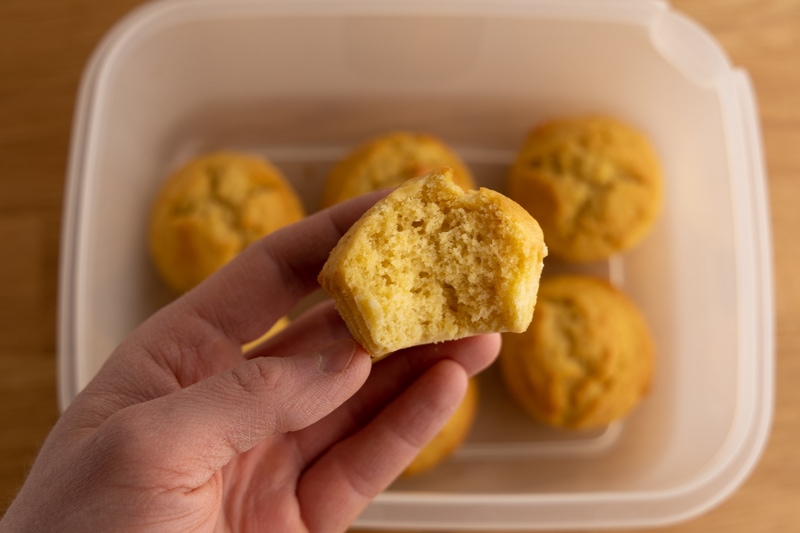
How to Store Mango Puree
Pour the mango puree into an airtight container and refrigerate it for up to 4 days. If you need more time, you can freeze the puree.
If you’re not going to use all the puree in one go, always use clean spoons for scooping. This way, you won’t contaminate the mashed mango, and it won’t spoil prematurely.
Mango Storage and Ripening Summary
Thank you for reading this guide on ripening and storing mangoes. Let’s recap what we’ve covered above:
- How to tell when a mango is ripe? A ripe mango yields slightly under gentle pressure. If it’s firm and has no give, it still needs some time to ripen. If it’s all soft or mushy, it’s overripe and you should use it soon.
- How to ripen a mango? Leave the mango on the counter away from sunlight for a few days to mature. To speed up the process, you can place the fruit in a brown bag and even throw in an apple or banana in that bag if you want to go the extra mile.
- How to store mangoes? Unripe mangoes should sit on the counter at room temperature until they ripen. Once ripe, they last about 5 to 7 days if refrigerated and only 2 to 3 days if you leave them on the counter.
Rotten Records: Share Your Snap!
Caught some food past its prime? Upload your photo to “Rotten Records” and help others spot the signs of spoilage. Every image makes our food community safer and more informed!
